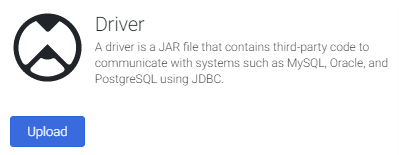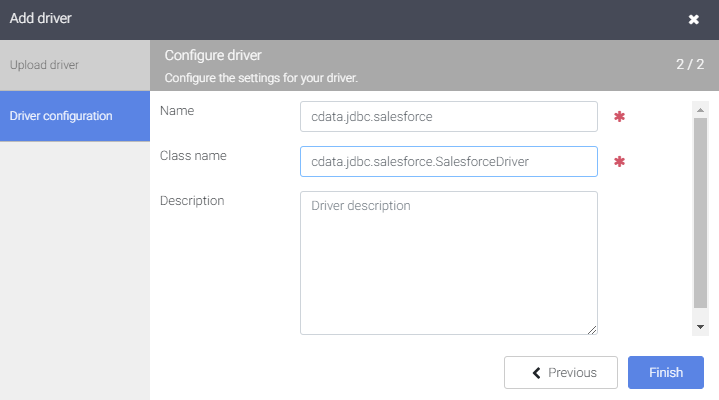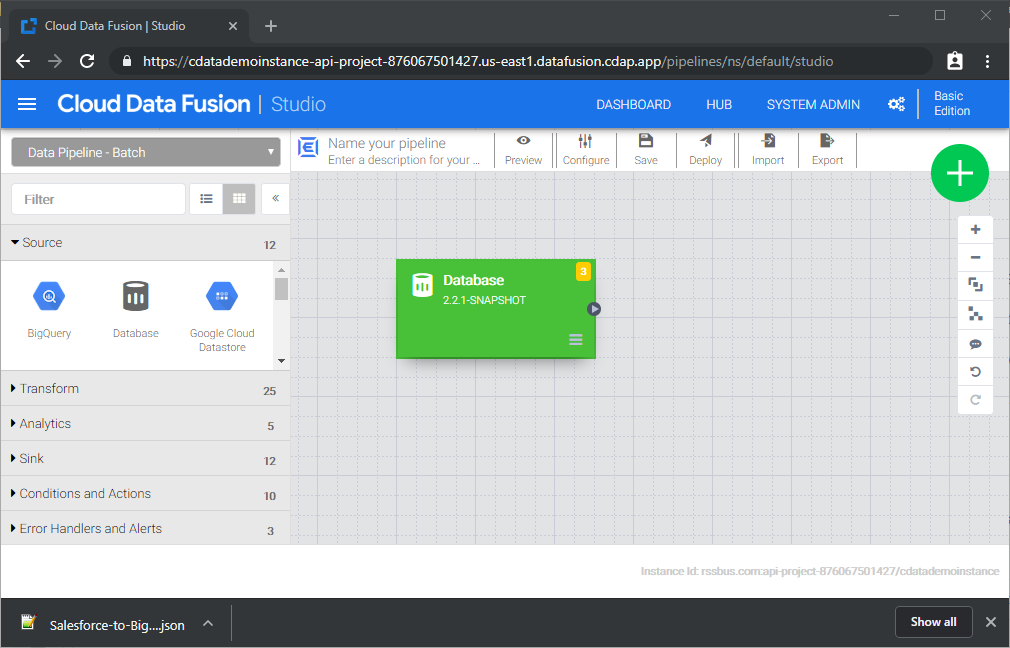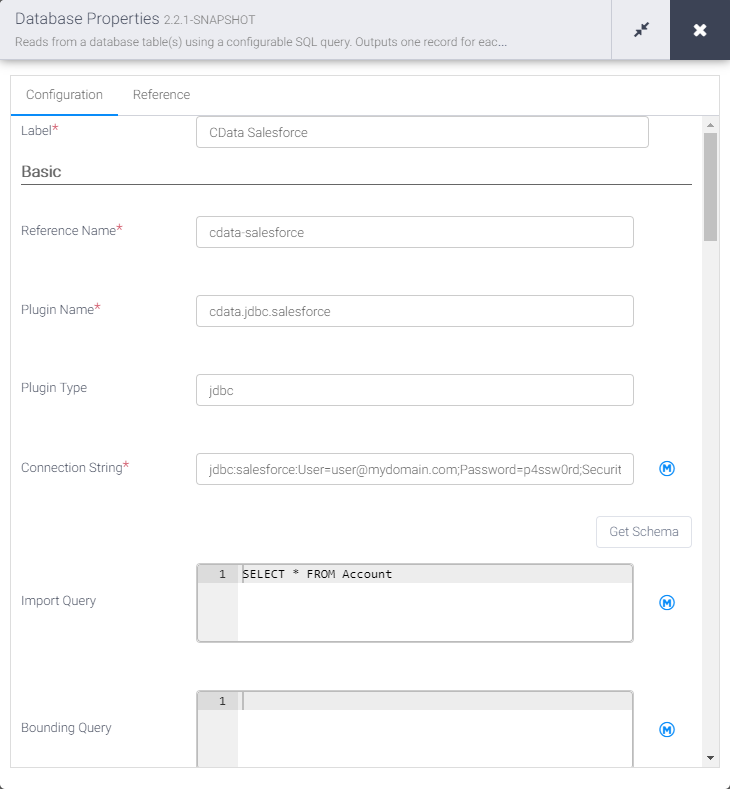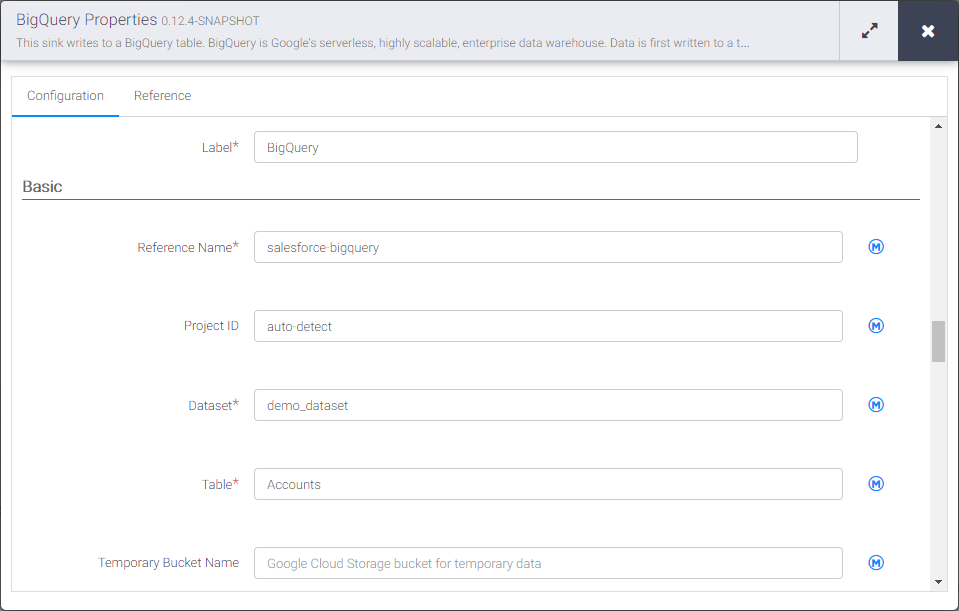Discover how a bimodal integration strategy can address the major data management challenges facing your organization today.
Get the Report →Build SAP SuccessFactors-Connected ETL Processes in Google Data Fusion
Load the CData JDBC Driver into Google Data Fusion and create ETL processes with access live SAP SuccessFactors data.
Google Data Fusion allows users to perform self-service data integration to consolidate disparate data. Uploading the CData JDBC Driver for SAP SuccessFactors enables users to access live SAP SuccessFactors data from within their Google Data Fusion pipelines. While the CData JDBC Driver enables piping SAP SuccessFactors data to any data source natively supported in Google Data Fusion, this article walks through piping data from SAP SuccessFactors to Google BigQuery,
Upload the CData JDBC Driver for SAP SuccessFactors to Google Data Fusion
Upload the CData JDBC Driver for SAP SuccessFactors to your Google Data Fusion instance to work with live SAP SuccessFactors data. Due to the naming restrictions for JDBC drivers in Google Data Fusion, create a copy or rename the JAR file to match the following format driver-version.jar. For example: cdatasapsuccessfactors-2020.jar
- Open your Google Data Fusion instance
- Click the to add an entity and upload a driver
![]()
- On the "Upload driver" tab, drag or browse to the renamed JAR file.
- On the "Driver configuration" tab:
- Name: Create a name for the driver (cdata.jdbc.sapsuccessfactors) and make note of the name
- Class name: Set the JDBC class name: (cdata.jdbc.sapsuccessfactors.SAPSuccessFactorsDriver)
![Configuring the driver (Salesforce is shown.)]()
- Click "Finish"
Connect to SAP SuccessFactors Data in Google Data Fusion
With the JDBC Driver uploaded, you are ready to work with live SAP SuccessFactors data in Google Data Fusion Pipelines.
- Navigate to the Pipeline Studio to create a new Pipeline
- From the "Source" options, click "Database" to add a source for the JDBC Driver
![Adding a database source]()
- Click "Properties" on the Database source to edit the properties
NOTE: To use the JDBC Driver in Google Data Fusion, you will need a license (full or trial) and a Runtime Key (RTK). For more information on obtaining this license (or a trial), contact our sales team.
- Set the Label
- Set Reference Name to a value for any future references (i.e.: cdata-sapsuccessfactors)
- Set Plugin Type to "jdbc"
- Set Connection String to the JDBC URL for SAP SuccessFactors. For example:
jdbc:sapsuccessfactors:RTK=5246...;User=username;Password=password;CompanyId=CompanyId;Url=https://api4.successfactors.com;You can authenticate to SAP Success Factors using Basic authentication or OAuth with SAML assertion.
Basic Authentication
You must provide values for the following properties to successfully authenticate to SAP Success Factors. Note that the provider will reuse the session opened by SAP Success Factors using cookies. Which means that your credentials will be used only on the first request to open the session. After that, cookies returned from SAP Success Factors will be used for authentication.
- Url: set this to the URL of the server hosting Success Factors. Some of the servers are listed in the SAP support documentation (external link).
- User: set this to the username of your account.
- Password: set this to the password of your account.
- CompanyId: set this to the unique identifier of your company.
OAuth Authentication
You must provide values for the following properties, which will be used to get the access token.
- Url: set this to the URL of the server hosting Success Factors. Some of the servers are listed in the SAP support documentation (external link).
- User: set this to the username of your account.
- CompanyId: set this to the unique identifier of your company.
- OAuthClientId: set this to the API Key that was generated in API Center.
- OAuthClientSecret: the X.509 private key used to sign SAML assertion. The private key can be found in the certificate you downloaded in Registering your OAuth Client Application.
- InitiateOAuth: set this to GETANDREFRESH.
Built-in Connection String Designer
For assistance in constructing the JDBC URL, use the connection string designer built into the SAP SuccessFactors JDBC Driver. Either double-click the JAR file or execute the jar file from the command-line.
java -jar cdata.jdbc.sapsuccessfactors.jarFill in the connection properties and copy the connection string to the clipboard.
![Using the built-in connection string designer to generate a JDBC URL (Salesforce is shown.)]()
- Set Import Query to a SQL query that will extract the data you want from SAP SuccessFactors, i.e.:
SELECT * FROM ExtAddressInfo
![Configuring the database source]()
- From the "Sink" tab, click to add a destination sink (we use Google BigQuery in this example)
- Click "Properties" on the BigQuery sink to edit the properties
- Set the Label
- Set Reference Name to a value like sapsuccessfactors-bigquery
- Set Project ID to a specific Google BigQuery Project ID (or leave as the default, "auto-detect")
- Set Dataset to a specific Google BigQuery dataset
- Set Table to the name of the table you wish to insert SAP SuccessFactors data into
![Configuring the BigQuery sink]()
With the Source and Sink configured, you are ready to pipe SAP SuccessFactors data into Google BigQuery. Save and deploy the pipeline. When you run the pipeline, Google Data Fusion will request live data from SAP SuccessFactors and import it into Google BigQuery.
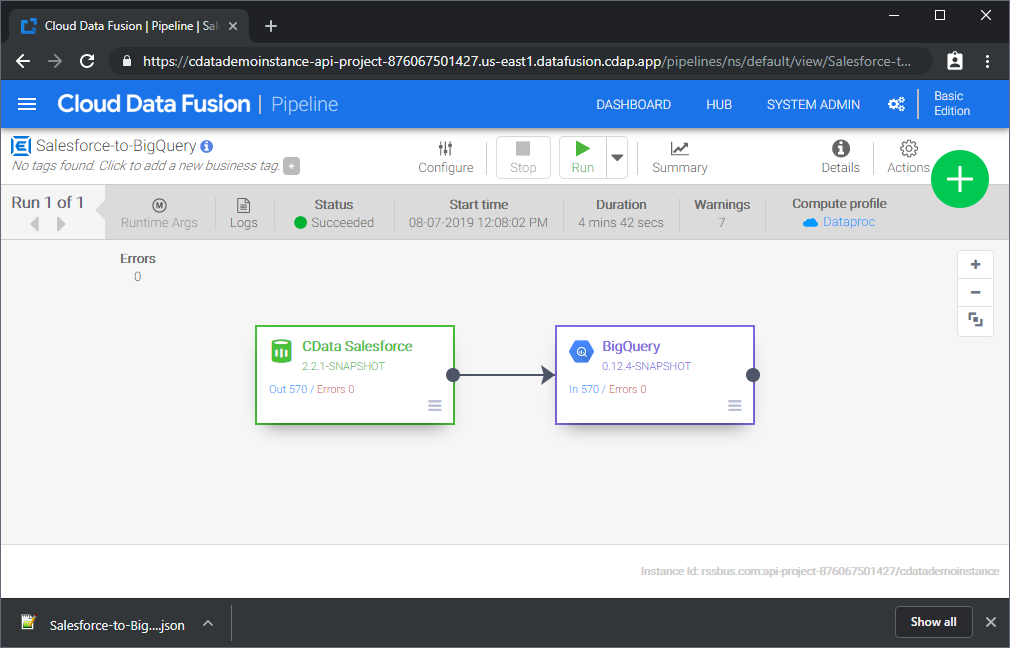
While this is a simple pipeline, you can create more complex SAP SuccessFactors pipelines with transforms, analytics, conditions, and more. Download a free, 30-day trial of the CData JDBC Driver for SAP SuccessFactors and start working with your live SAP SuccessFactors data in Google Data Fusion today.






